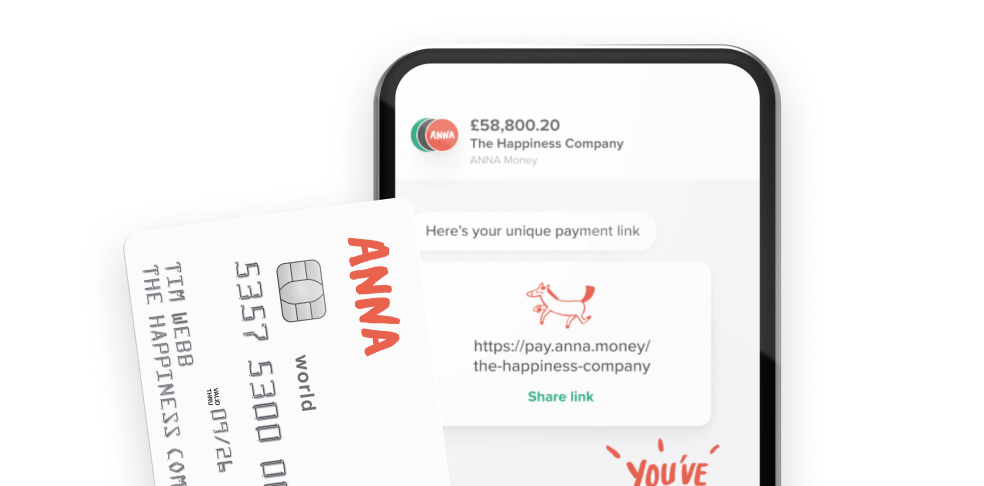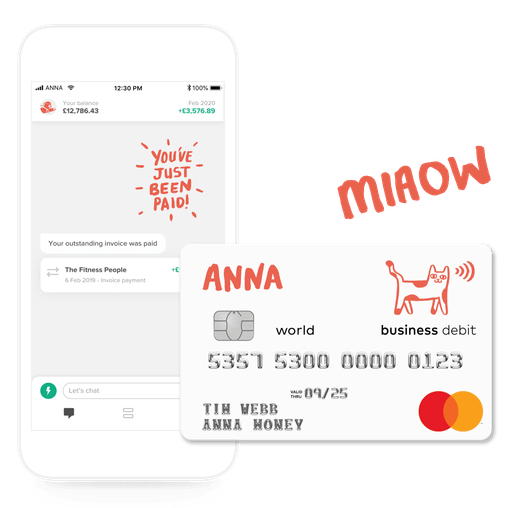Cost of Goods Sold (COGS) – What It Is & How to Calculate


Learn about the cost of goods sold (COGS), how to calculate it, and what it means for businesses. Including different accounting methods.


- In this article
- What is Cost of Goods Sold?
- What Is Included in the Cost of Goods Sold?
- Exclusions From COGS
- How to Calculate Cost of Goods Sold
- COGS and Taxes
- How to Use Cost of Goods Sold for Your Business
- Accounting Method for Cost of Goods Sold
- Comparing COGS to Other Financial Metrics
- How Does Inventory Affect COGS?
- Planning for Profit
- FAQs
Understanding a firm’s profit is essential for formulating its business strategy and deducing the efficiency of its operations. The cost of goods sold (COGS) is a key metric for understanding this – and considering the profitability of UK firms fell in 2023, it’s crucial to keep an eye on what the numbers are saying.
This article explains exactly what COGS is, how to calculate it, and a few quirks to be aware of, such as various accounting options and how it compares to similar metrics.
What is Cost of Goods Sold?
Cost of goods sold measures how much money a business spends on making and selling its products. This includes production, labour, and material costs.
Understanding COGS Meaning and Importance
Companies use COGS to help them build a clear financial picture of their business. By subtracting COGS from overall profit or income, they can better understand their efficiency and any potential scope for increasing profit.
The lower the COGS and the higher the profit, the better.
Cost of Sales for Goods and Products
COGS calculation differs somewhat depending on whether a business sells goods or services.
In the case of a firm selling goods and products, COGS can be calculated by subtracting the costs of goods sold from total sales income.
However, for companies that hold inventory, it’s a little more complex. They must add opening stock to total purchases made and then subtract closing stock at the end.

Cost of Sales (COS) for Service Companies
Service companies don’t hold inventory, but they have to pay the salaries of staff or contractors who are carrying out the services provided, and this may include projects the business doesn’t complete or receive payment for. Wage costs become the equivalent of the inventory.
Therefore, COGS can be calculated by subtracting the wage costs for services the business didn’t sell from the total wage costs across all projects.
What Is Included in the Cost of Goods Sold?
COGS focuses on direct costs used to make a product or service. It excludes indirect costs.
To be able to calculate COGS accurately, a business should maintain records of all inventory purchases and counts and production costs. Or, for a services business, labour costs and how the labour is used.
Direct Costs
Direct costs of production include:
- Direct labour
- Direct materials
- Shipping costs (but not to customers)
- Manufacturing overhead costs
- Direct production costs
Indirect Costs
Indirect costs are expenses that a business incurs as part of selling an item, but aren’t strictly part of the manufacturing process. One example would be marketing, but we’ll include a more comprehensive list shortly.
Below are some other metrics you may come across when calculating COGS.
Inventory at Beginning of Year
This indicates the value of inventory held at the start of an accounting year.
Purchases (Less Personal Use)
Purchases refer to the total cost of purchasing inventory.
Cost of External Labour
External labour costs are wages paid to contractors or subcontractors outside an organisation.
Materials & Supplies
Materials and supplies may include raw materials, office supplies, semi-finished products, and tools or devices used for manufacturing.
Inventory at End of Year
This indicates the value of inventory held at the end of an accounting year.
Additional Inventory
Additional inventory is inventory that isn’t sold within the accounting period.
Exclusions From COGS
COGS does not include the following:
- Administrative expenses
- Distribution and shipping to customers
- Office rents
- Marketing and advertising
- Accounting and legal fees
- Management wages
- Interest and capital expenditures
- Costs of unsold goods
How to Calculate Cost of Goods Sold
Now you have an understanding of the theory, let’s look at an example.
If a business spends £3,000 and also has £6,000 in inventory at the beginning of the year, but £2,000 at the end of the year, it would do the following to calculate COGS:
£3,000 + £6,000 – £2,000 = £7,000
Benefits and Risks of the COGS Formula
COGS can help a business to gain a better understanding of its profitability. With some further analysis, a company can use it to look for ways to finetune its operations and make processes more efficient.
But while COGS has its place, it shouldn’t be the only measure that businesses use to formulate their business strategy. Focusing too much on increasing project margins and not enough on other goals, such as customer service or product quality, can be harmful.
Also, there may be some cases where a higher COGS is justified, such as a business committed to sourcing premium-quality products or using ethical methods.
Average Cost Method
The average cost method takes the average price of all goods, even if they were purchased at different times and therefore at varying prices.
Special Identification Method
In contrast, the special identification method takes the precise cost of each good when it was bought.
This is often the method of favour for businesses dealing with high-value or unique items.
How to Calculate Cost of Goods Sold Without Having an Ending Inventory
If there’s no ending inventory, companies can omit inventory from the calculation and focus only on their total purchases and expenses.
COGS and Taxes
COGS is part of income tax filing for many businesses. It’s a key element of writing off expenses for firms that sell or resell products, as firms need to know the value of their inventory at the start and end of each tax year.
Both generally accepted accounting principles (GAAP) or Financial Reporting Standard (FRS) – the two main methods in the UK – require COGS for this.
How to Use Cost of Goods Sold for Your Business
COGS isn’t a metric to calculate and consider in isolation. Instead, it can be used to inform strategy and decision-making about the rest of a business.
Business Metrics that Use Cost of Goods Sold
Once you know the COGS for your business, you can use it to calculate more metrics, including:
- Gross profit margin
- Inventory turnover
- Manufacturing cycle time
- Material yield
- Costs of goods sold as a percentage of revenue
Using Cost of Goods Sold to Improve Profitability
A rising COGS suggests that production is becoming more inefficient, while the reverse is true for a decreasing COGS.
A business can therefore use it to test whether new strategies or measures aimed at boosting productivity are effective. For instance, supply chain management or technology and equipment.
Pricing Your Products
COGS can be used to help a business decide how to price its products or services. When COGS is lower, it gives a firm more flexibility over whether to sell more products at a lower price or fewer products with a higher profit margin.
Planning Future Opportunities
When a company has a lower COGS, it is better placed to invest in its growth and get through tough periods.
Accounting Method for Cost of Goods Sold
As touched on already, there are various accounting methods to calculate the cost of goods sold.
First-in-First-Out (FIFO)
FIFO is an approach to valuing inventory that assumes the first unit in an inventory is also the first unit sold, while the last item produced remains in the inventory until items produced earlier are sold.
Let’s say that a company starts with 100 units costing £10 each in its inventory, but later adds 100 units costing £11 each, and sells 120 of those 200 units.
Under FIFO, we would price the first 100 units sold at £10 each and the next 20 units sold at £11 each. This would mean that the COGS would be £1000 + £220 = £1220
Last-in-First-Out (LIFO)
LIFO takes a different approach, assuming that the last unit to enter into the inventory is the one sold first. When prices rise over time, this results in a higher COGS compared to the FIFO method.
Taking the same example as outlined above, the first 100 units sold would be counted at the higher price of £11 each, and the remaining 20 units for £10 each. Therefore, the COGS would be £1100 + £200 = £1300.
Weighted Average Cost Method (WAC)
WAC goes somewhere in between LIFO and FIFO. It takes the weighted average of every unit solid in the accounting period.
Comparing COGS to Other Financial Metrics
Now, let’s compare COGS with some other financial metrics that also measure production expenses.
Operating Expenses vs. COGS
While COGS focuses on the direct costs involved in production, operating expenses measures on the indirect costs of running a business.
Cost of Revenue vs. COGS
The cost of revenue measures the total cost of producing a good or service. It’s a broad measure encompassing distribution and marketing costs into its calculation, both of which COGS excluded.
Cost of Sales vs. Cost of Goods Sold
Cost of sales are the costs and COGS both focus on direct costs. However, COGS tends to have more emphasis on inventory, while cost of sales is a better measure for services businesses due to its inclusion of overheads and labour too.
Cost of Goods Manufactured (COGM) vs. COGS?
COGM and COGS are similar terms, but COGM measures the cost of producing goods or services before sale, while COGS measures costs after items are sold. Therefore, COGM is useful for surveying manufacturing processes, and COGS is better for analysing profitability.
How Does Inventory Affect COGS?
We’ve already seen that tracking inventory accurately is crucial for calculating COGS. There are two main options for this: Perpetual and Periodic Inventory Tracking Systems.
We examine both below.
Using the Periodic Inventory System in Practice
The periodic inventory system continuously tracks inventory over time, updating records each time an additional unit is added to stocks or a unit is sold.
This generally requires some kind of digital record-keeping with a point-of-sale and asset management system.
Using the Perpetual Inventory System in Practice
In contrast, a perpetual inventory system doesn’t keep a real-time record of stock. Instead, it only assesses stock levels from time to time.
This generally means that an organisation opts for a manual count of inventory, with individuals counting stock.
Planning for Profit
Cost of goods sold doesn’t just measure the cost of producing goods or services – it also gives a business crucial insight into its profitability. While it shouldn’t be the sole metric a company pays attention to, it can be invaluable for informing future strategy and decisions.
Looking for the right companion to run your business and track crucial metrics like COGS? Give ANNA a go for all your business accounting needs, with features like payroll and VAT filing.
FAQs
How To Report COGS On An Income Statement
COGS generally appears on an income statement below sales revenue.
How Do You Decide What Stock Should Be Included In Your COGS Calculation?
You should deduct stock that is unsold at the end of the accounting period from the total stock.
Is Cost Of Goods Sold The Same As Production Costs?
Cost of goods sold is one way to measure production costs. However, there are also alternative methods, such as costs of goods manufactured (COGM).
Is Cost Of Goods Sold An Expense?
In accounting, the cost of goods sold is an expense since it measures costs.
What Type Of Companies Are Excluded From A COGS Deduction?
Pure services companies cannot claim a cost of goods sold deduction.
When Should I Claim For COGS?
You can claim a COGS deduction when filing taxes. Usually, an accountant will handle this for you.
Does Cost Of Goods Sold Include Transaction Or Listing Fees?
Cost of goods sold generally focuses on direct manufacturing costs, meaning that transaction and listing fees are excluded.
Is Packaging Part Of COGS?
Packaging is a direct cost involved in the manufacturing process, so it can be included in COGS.
Is The Cost Of Goods Sold An Asset?
No, the cost of goods sold is an expense, because it focuses on a company’s costs.
How Does The Cost Of Goods Sold Affect Profitability?
The higher the cost of goods sold is, the less profitable a company is.
Are Salaries Included In COGS?
Salaries are only included in COGS when they are paid to labour directly involved in production. Other salaries cannot be included, which is the case for staff working in administration or marketing.
Can The Cost Of Goods Sold Be Negative?
Theoretically, the cost of goods sold can be negative. However, it’s rare for the measure to be negative since it would require a company to sell more units of inventory than it purchased.
Are Shipping And Transportation Costs Included In The Cost Of Goods Sold?
Transportation between different factories or production facilities can be included in the cost of goods sold. However, the cost of shipping items to customers can't be included.
Read the latest updates
Open a business account in minutes



![How to Start a Currency Exchange Business in the UK [Guide]](https://storage.googleapis.com/anna-website-cms-prod/medium_Cover_3000_Landscaping_Business_Names_Creative_Name_Ideas_daad2f9e2a/medium_Cover_3000_Landscaping_Business_Names_Creative_Name_Ideas_daad2f9e2a.webp)




![140 Creative Tutoring Business Names [Ideas & Examples]](https://storage.googleapis.com/anna-website-cms-prod/medium_Cover_3000_Landscaping_Business_Names_Creative_Name_Ideas_d7964059b3/medium_Cover_3000_Landscaping_Business_Names_Creative_Name_Ideas_d7964059b3.webp)

![How to Start a Self-Employed Business in the UK [Guide]](https://storage.googleapis.com/anna-website-cms-prod/medium_Cover_3000_Landscaping_Business_Names_Creative_Name_Ideas_fe5b6edef1/medium_Cover_3000_Landscaping_Business_Names_Creative_Name_Ideas_fe5b6edef1.webp)
![How to Start an Electrician Business in the UK [Guide]](https://storage.googleapis.com/anna-website-cms-prod/medium_Cover_3000_How_to_Start_a_Car_Detailing_Business_Successfully_74488a6268/medium_Cover_3000_How_to_Start_a_Car_Detailing_Business_Successfully_74488a6268.webp)


